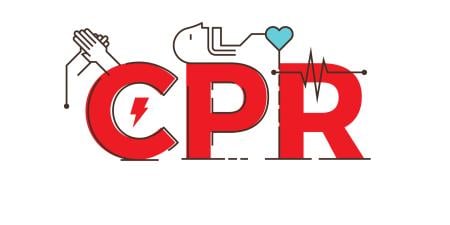In the course of disease and medical treatment, patients commonly experience a kind of suffering that goes beyond physical distress. Emotional affliction can prove equally and sometimes more debilitating than bodily injury and deservedly clamors for attention from physicians. While earlier paternalistic conceptions of medicine viewed the body as a text to be read by a skilled physician, contemporary medicine has come to espouse the biopsychosocial model, which reminds doctors of the aspects of health that extend beyond the physical body. Yet in practice, psychosocial complaints are often relegated to a secondary status, and this can have dire consequences not only for patient outcomes but also for the patient-physician relationship.
Understanding Suffering
Consider, for example, the case of a 35-year-old sculptor with metastatic breast cancer whose chemotherapy pains her not only physically but emotionally. She feels frightened and uninformed, misled about the severity of the resulting disfigurement and the virilizing side effects of a consequent oophorectomy. Her case culminates in a metastasis to the supraclavicular fossa that weakens her sculpting hand and prevents her from working. Despite these setbacks, this patient’s disease eventually goes into remission. A holistic look at this woman, beyond the cancer diagnosis, reveals how her disease infects her livelihood and sense of self, despite therapeutic successes. Upon considering all her losses, one might anticipate the severe depression into which she soon sank. This is the nature of suffering.
In 1982, before the concept captured the public spotlight, Eric J. Cassel, MD, presented this case in an incisive yet expansive treatise on the subject of suffering and its place in medicine [1]. The framework for Cassel’s “The Nature of Suffering and the Goals of Medicine” is the all-too-common situation of patients whose emotional and spiritual suffering goes unaddressed by their physicians. Cassel traces this deficiency to Descartes’ mind-body dualism, in which the afflictions of the body—identified as an object of study—became associated with medicine and doctoring, while afflictions of the mind—identified as the abode of subjective personhood—did not. Over the centuries, the growing reliance on the scientific method and standards of care increasingly excluded mental disorders from the medical arena; thus many present-day physicians find themselves conditioned throughout their training to dismiss or at least minimize psychological concerns. Patients, on the other hand, may often expect such concerns to be addressed and factored into their treatment plans. Unfortunately, these disparate expectations create a sizeable rift between patient and physician.
The Integrity of Persons
Cassel postulates that suffering arises from a threat to personhood that often accompanies physical illness or pain; it persists as long as the patient’s perception of the threat exists and can thus outlast the illness itself. The threat is not necessarily commensurate with physical pain. For example, the considerable pain of childbirth does not usually engender extreme suffering; the joy of birth renders the experience more tolerable than a previous injury that may have demanded less physically. Cassel concludes that when people feel pain they cannot control, overwhelming pain, pain from an unknown source, pain that carries a dire meaning or pain of a chronic nature, suffering may take on a life of its own. In all these instances, the patient views his pain not within the scope of life or death, but as a threat to the continued integrity of his personhood. This fear stems from an undesirable and uncertain vision of the future. In other words, the patient dreads an alteration in his personhood that the pain will cause, a change that will negatively impact plans, goals and dreams. This anxiety causes the patient to suffer.
The Cartesian model of mind-body medicine that Cassel described in 1982 still exists, but there is now at least a recognized need to attend to the patient’s suffering by putting these two aspects of the person on a rhetorically level playing field. Since Cassel's landmark article, the biopsychosocial model of medicine has gained credibility, informing physicians of their duty to consider how psychological and social forces shape disease processes and to address patients’ mental and social well-being. As part of this movement the concept of emotional pain (suffering) has been explored carefully and developed under a multitude of new terms.
Yet the advances would be merely semantics without the effort that has gone into researching their shared fundamental premise: there is more to health and illness than mere biology. Indeed, examining the interplay between biology and the human psyche uncovers exciting truths. Medical conditions manifest in psychiatric symptoms, and vice versa; the two cannot be extricated. Even more astounding are cases in which symptoms exceed in magnitude the etiologic mechanisms that cause them. For example, biological treatment of adrenal insufficiency can alleviate its associated psychiatric woes, but in systemic lupus erythematosus, such an approach is unpredictable: mental health may improve or worsen [2]. Patients with lupus often experience psychiatric comorbidities, most commonly depression; undergoing medical treatment has been shown to ameliorate some patients’ mental state and exacerbate the condition in others. While the factors guiding this outcome have been studied, they remain unclear [3]. What is clear is that to optimize patient care, one should be mindful of the full range of biopsychosocial components.
In these newer fields of study, much emotional and mental discomfort is labeled as “stress” [4]. Merriam-Webster defines stress as “a state resulting from… factors that tend to alter an existent equilibrium” [5]. Stress can come acutely and chronically; repeated bouts have been shown to decrease the thresholds for developing illnesses [6]. So widely accepted is the concept of stress that it has become cliché, a part of the cultural consciousness in this country. Yet, if we exclude physiologic stresses imposed by exercise and so forth, and consider mental stress under the definition given above, then does it not come close to capturing Cassel’s notion of suffering? Both stress and suffering can occur on a small or large scale, and both result from an internal conflict between that which is present and that which was desirable or anticipated. Though the ubiquity of “stress” in contemporary society may trivialize its gravity, it is nonetheless a powerful word. It carries physical, emotional and psychological meaning, and as such is perhaps the best analogue to suffering that modern medicine owns. Accordingly, then, today’s new arsenal of linguistic descriptors frame stress as a result of a shift in the balance of one’s life, drawing the conclusion that mental distress can complicate and worsen biologic pathology and therefore deserves attention from the medical community.
Falling Short of the Mark
Yet even stress is not reliably treated, and patients endure their afflictions for years at a time. Problems that cannot be physiologically explained and pharmacologically treated are frequently ignored. Though hospitals with rich resources may in fact take the step of creating positions for stress-management consultants, the house staff is often neither made aware of these resources, nor otherwise encouraged to use them. Studies like one undertaken in California demonstrate the minimal attention psychosocial issues receive during medical school and residency training [7]. Student and resident respondents to the survey indicated that a lack of emphasis on mind-body medicine resulted in unfamiliarity with the evidence and practice methods of this type of healing. This seems to support the belief that biopsychosocial medicine is a token phrase, used cavalierly and taught without enough conviction to compel students and residents to regularly use the approach. Poor education leads to a lack of comfort in addressing anything beyond the patient’s physical problems; absence of positive role models to demonstrate expected behaviors leads learners to devalue the role of psychosocial contributors to illness, and emphasis on the bottom line forces house staff to solve the clinical problems as quickly as possible, rarely taking the time to explore the personal ones that cause suffering and beg to be discussed in depth.
It is disheartening enough that many young physicians cannot endorse the ideals of holistic medicine; it is more appalling that even psychiatrists often put more value on biologically explainable complaints than on mentally based ones. Miresco and Kirmayer conclude that the more psychological a process seems, the more the psychiatrist holds the patient responsible and blameworthy; belief that the illness has a neurobiological etiology has the opposite effect [8]. If those physicians who elected to be specially trained in disorders of the mind share this bias, then patients who suffer psychological and spiritual pain may find nowhere else to turn. Medicine has failed them.
Addressing the Difficulties
What is the problem? What makes addressing stress and suffering so challenging? Perhaps an overestimation of the difficulty of this task. In some patients, a moderate amount of probing and an empathic response alone will help. But to satisfy our responsibility to consider the threats to a person’s integrity we must come to appreciate how someone might feel besieged by her medical condition. Understanding the disease in the context of the patient’s life can serve as a lens that brings the threat to personhood into clear focus. Consider again Cassel’s 35-year-old sculptor; a physician who had queried the effect of her illness on her life and self-image would, at the very least, have deduced her risk for depression and validated it.
One way in which modern medicine manages stress is by classifying people as personality types: people with a type-A personality are theorized to handle illness in a very particular way—badly. Their highstrung, stubborn and take-charge nature puts them at a disadvantage when they are seriously ill: it is difficult for them to adapt to being cared for, deal with the unexpected, relax their hormonal excitation and so on [6]. Absent from this classification is mention of the power of spirituality, what Cassel calls the “transcendent dimension” in the list he proffered of the many constituents of personhood. Study after study has shown that coping approaches associated with religious beliefs can improve a seriously ill patient’s quality of life [9,10]. If a physician or caregiver elicits information about how disease is causing a patient’s suffering, she may find a solution more easily than expected or, again at the least, offer the patient validation.
The Goals of Medicine
Pursuing the quest to alleviate suffering is more difficult and more personal than selecting a computer function that delivers a message to a phlebotomist to draw the patient’s blood for a laboratory test. Cassel concludes that as medicine has historically excluded suffering from its sphere, it is unsurprising that suffering abounds and that it is often caused by medical treatment. Though he agrees that tackling this issue “presents problems of staggering complexity,” he reminds us that our knowledge of biology was once scant also. If we indeed believe that the relief of human suffering is a goal of medicine, then we have much work to do.
While the research in this field has exploded since 1982, room for improvement is vast; the first step is to persuade our doctors to believe in the mind’s centrality in matters of health and illness. Though that might seem a monumental task, think about it for a moment. Is it not natural to expect that every now and then a doctor can take off his white coat, pull up a chair, sit down and engage in listening to and empathizing with the suffering of another human being? While humans may grow stronger with each blow that does not kill us, suffering without someone to share with, someone to validate us, slowly plagues our soul. How truly wonderful it would be, and how much more would we appreciate our physicians, if they tapped the ability within—their inner empathy and intuition—and used the available resources to treat not only our pain, but our suffering too.
References
- Cassell EJ. The nature of suffering and the goals of medicine. N Engl J Med. 1982;306(11):639-645.
- O’Brien RF, Kifuji K, Summergrad P. Medical conditions with psychiatric manifestations. Adolesc Med Clin. 2006;17(1):49-77.
- Wekking EM. Psychiatric symptoms in systemic lupus erythematosus: an update. Psychosom Med. 1993;55(2):219-228.
- Nater UM, Gaab J, Gaab J, Ehlert U. Recent trends in behavioral medicine. Curr Opin Psychiatry. 2006;19(2):180-183.
-
Merriam-Webster OnLine. Stress. Available at: www.m-w.com/stress. Accessed August 10, 2006.
-
Sapolsky RM. Why Zebras Don’t Get Ulcers. 3rd ed. New York, NY: Henry Holt and Company; 2004.
- Astin JA, Goddard TG, Forys K. Barriers to the integration of mind-body medicine: perceptions of physicians, residents, and medical students. Explore (NY). 2005;1(4):278-283.
- Miresco MJ, Kirmayer LJ. The persistence of mind-brain dualism in psychiatric reasoning about clinical scenarios. Am J Psychiatry. 2006;163(5):913-918.
- Tarakeshwar N, Vanderwerker LC, Paulk E, Pearce MJ, Kasl SV, Prigerson HG. Religious coping is associated with the quality of life of patients with advanced cancer. J Palliat Med. 2006;9(3):646-657.
- McCullough ME, Larson DB, Hoyt WT, Koenig HG, Thoresen C. Religious involvement and mortality: a meta-analytic review. Health Psychol. 2000;19(3):211-222.



